Abstract
1. Percutaneous electrical stimulation of the human quadriceps muscle has been used to assess the loss of central activation immediately after a bout of fatiguing exercise and during the recovery period. 2. Fatigue was induced in eight healthy males by a maximal effort lasting 25 s performed on an isokinetic cycle ergometer at a constant pedal frequency of 60 revolutions per minute. The cranks of the ergometer were driven by an electric motor. Before and after the sprint, subjects allowed their legs to be passively taken round by the motor. During the passive movement the knee extensors were stimulated (4 pulses; 100 Hz). Peak voluntary force (PVF) during the sprint and peak stimulated forces (PSF) before and in recovery were recorded via strain gauges in the pedals. Recovery of voluntary force was assessed in a series of separate experiments in which subjects performed a second maximal effort after recovery periods of different durations. 3. Peak stimulated forces were reduced to 69.8 +/- 9.3% immediately after the maximal effort, (P < 0.05), but had returned to pre-exercise values after 3 min. The maximum rate of force development (MRFD) was also reduced following fatigue to 68.8 +/- 11.0% (P < 0.05) of control and was fully recovered after 2 min. PVF was reduced to 72.0 +/- 9.4% (P < 0.05) of the control value following the maximal effort. After 3 min voluntary force had fully recovered. 4. The effect of changing the duration of the fatiguing exercise (10, 25 and 45 s maximal effort) resulted in an increased degree of voluntary force loss as the duration of the maximal effort increased.(ABSTRACT TRUNCATED AT 250 WORDS)
Full text
PDF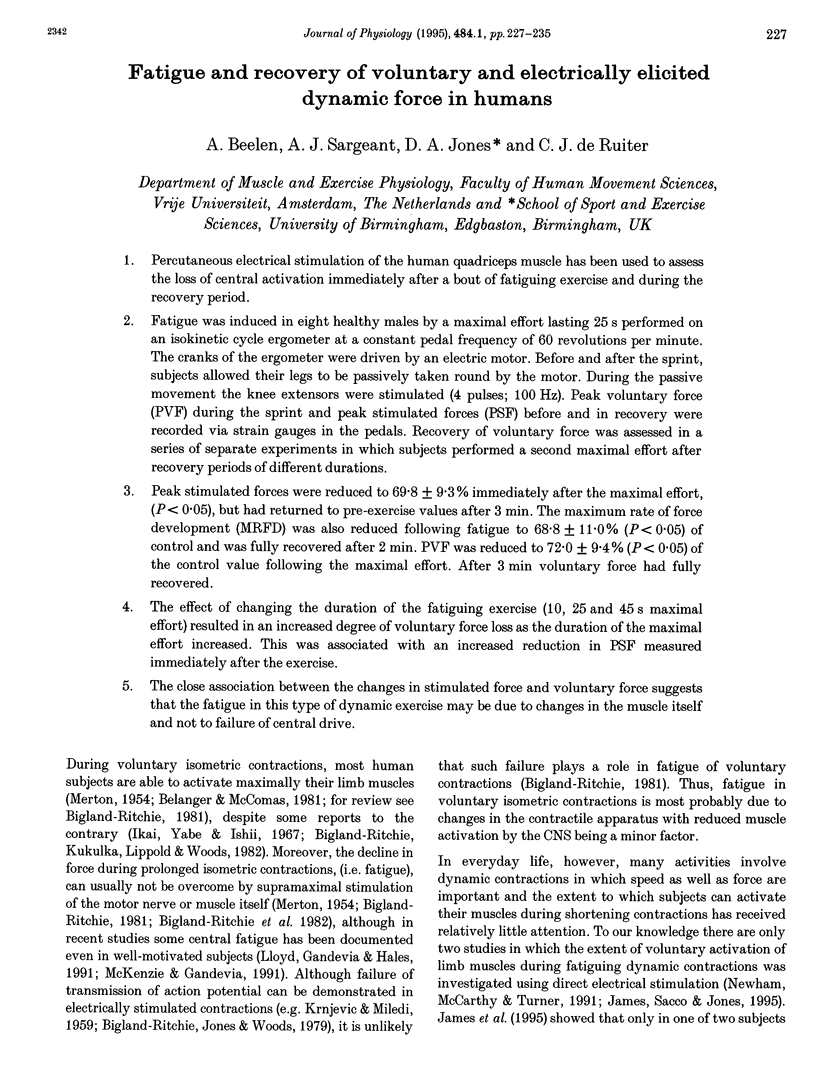
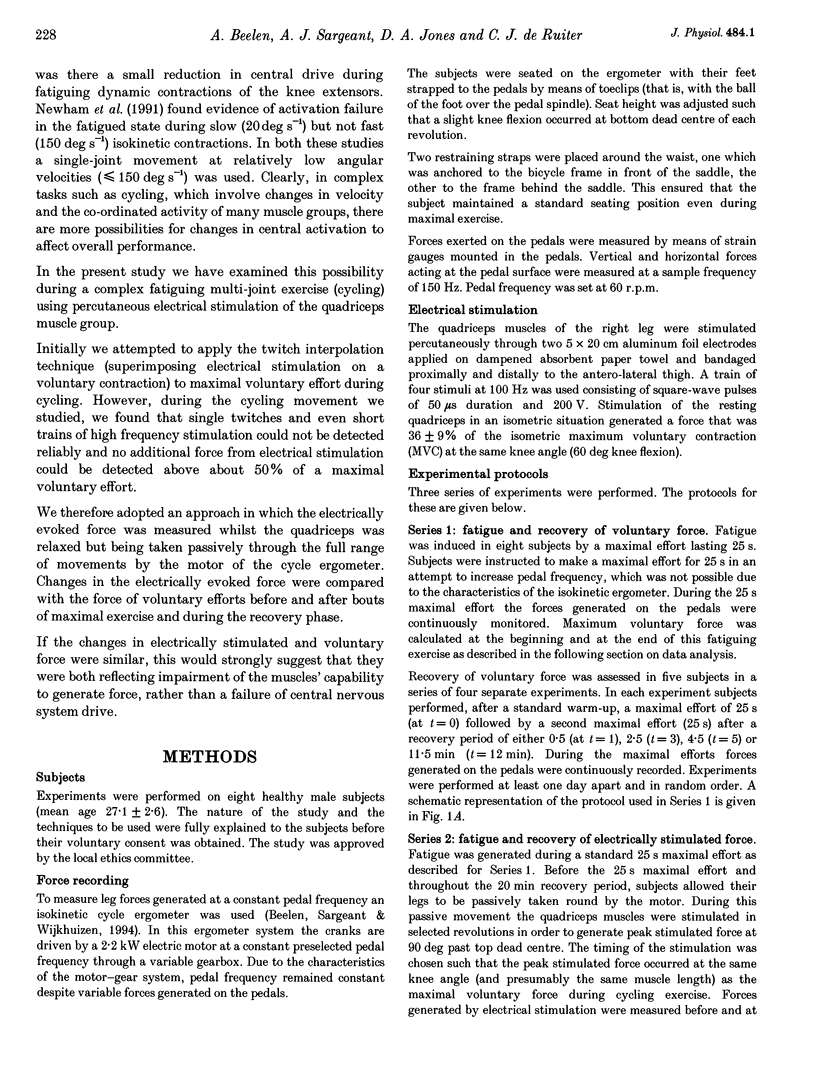
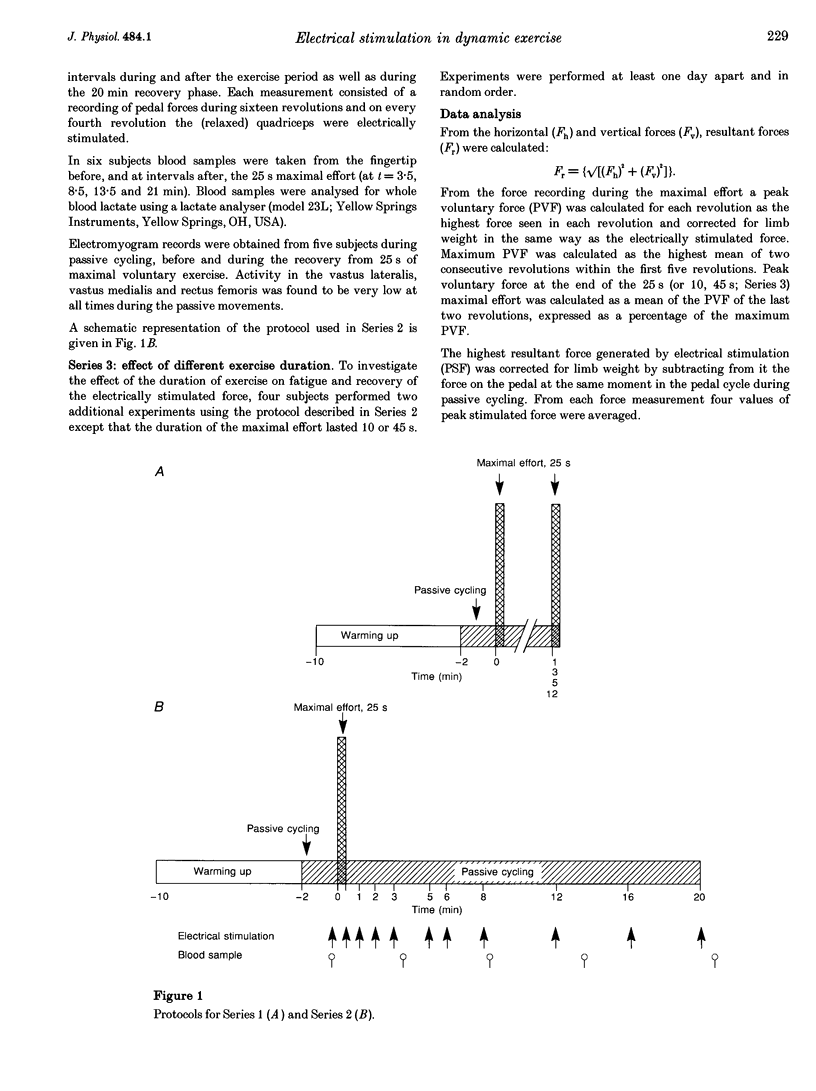
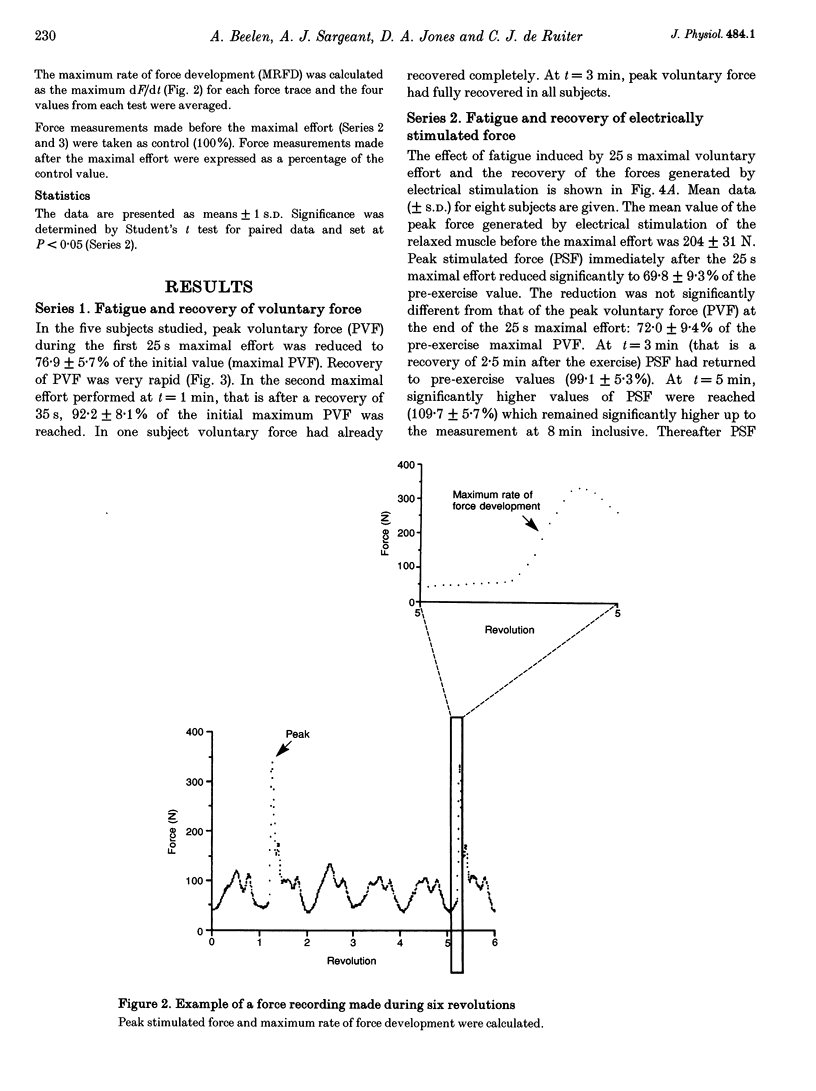
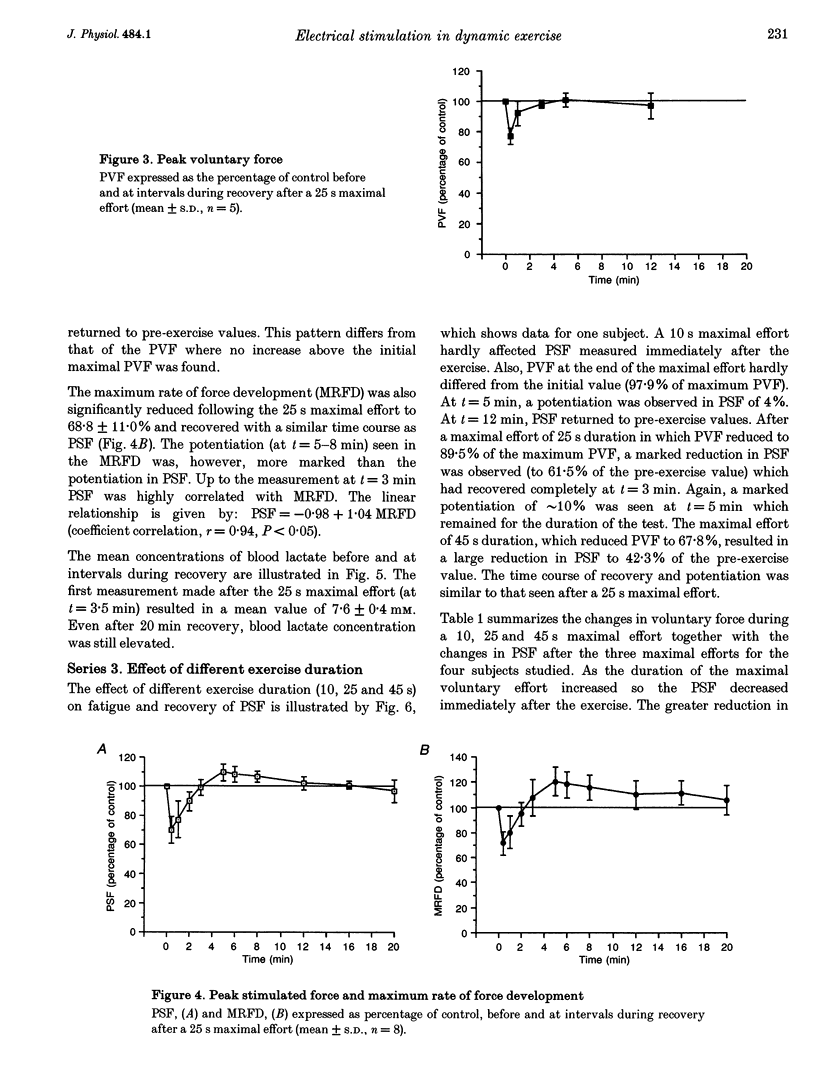
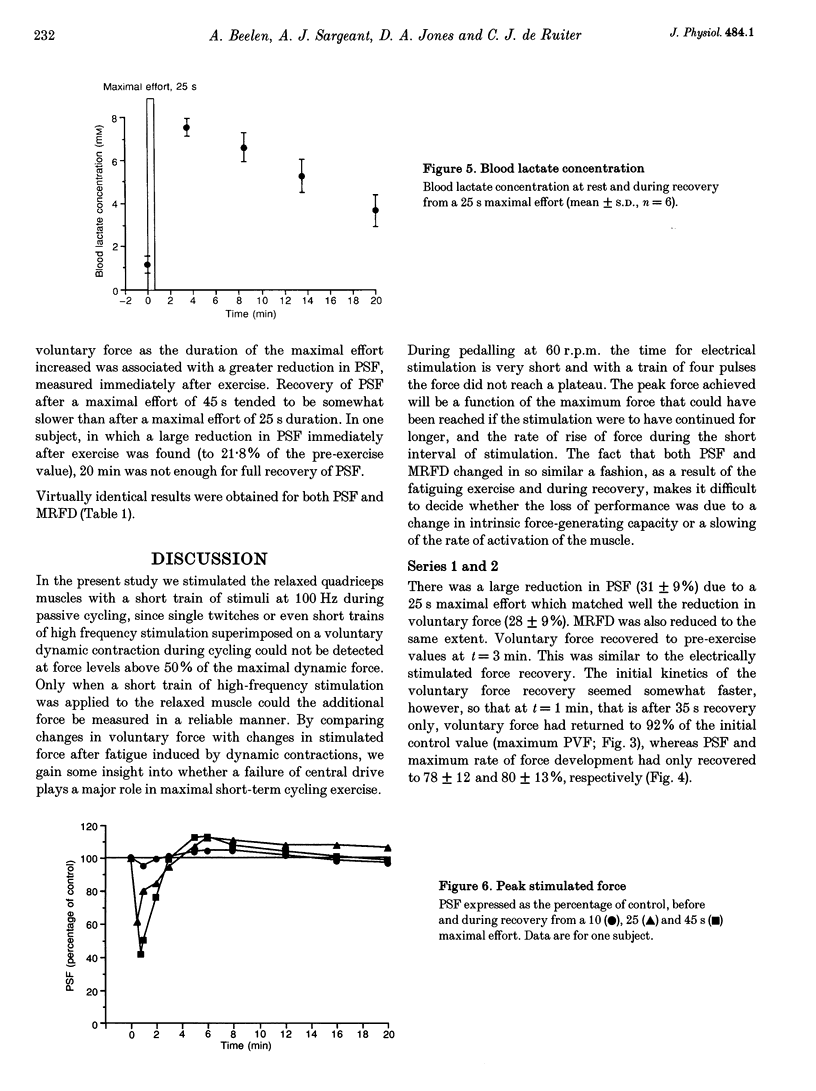
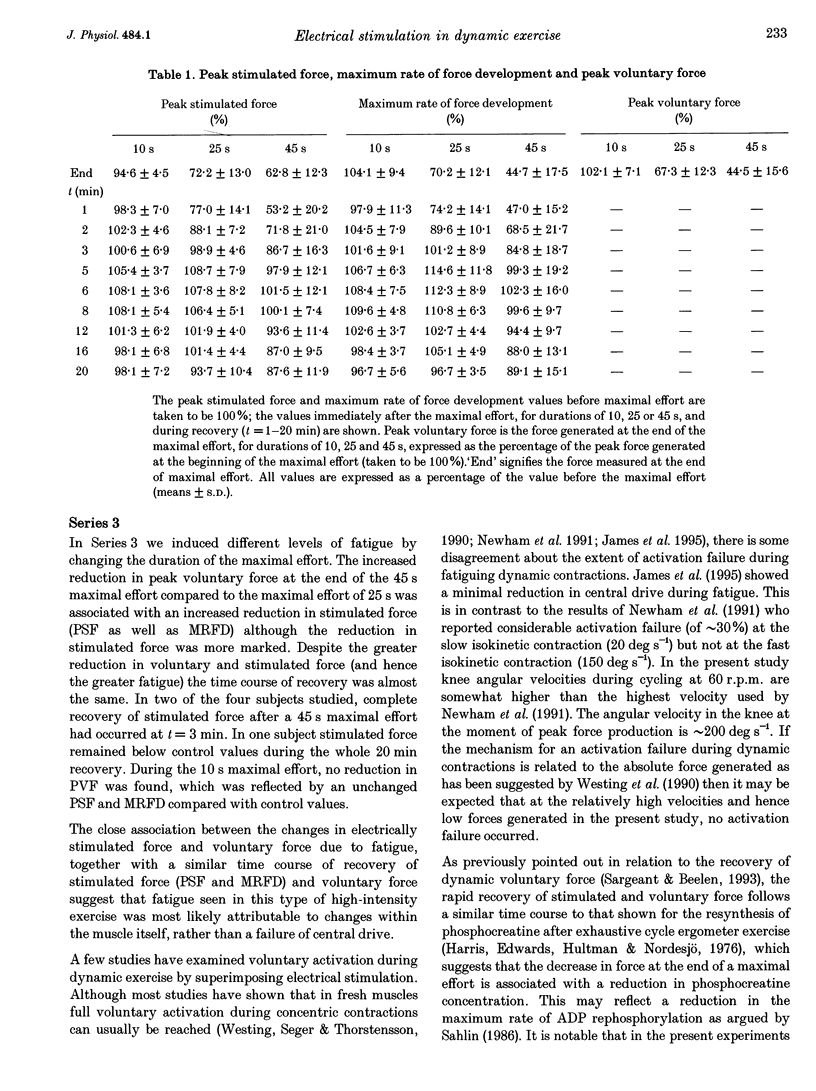
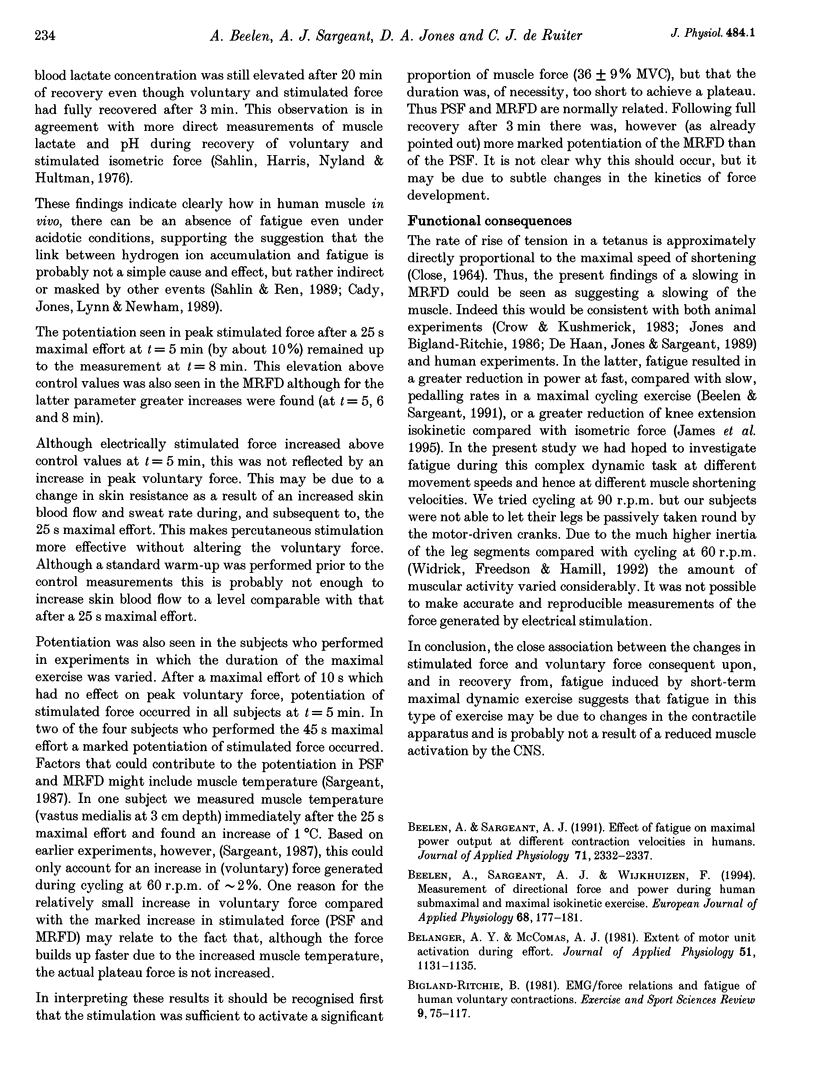
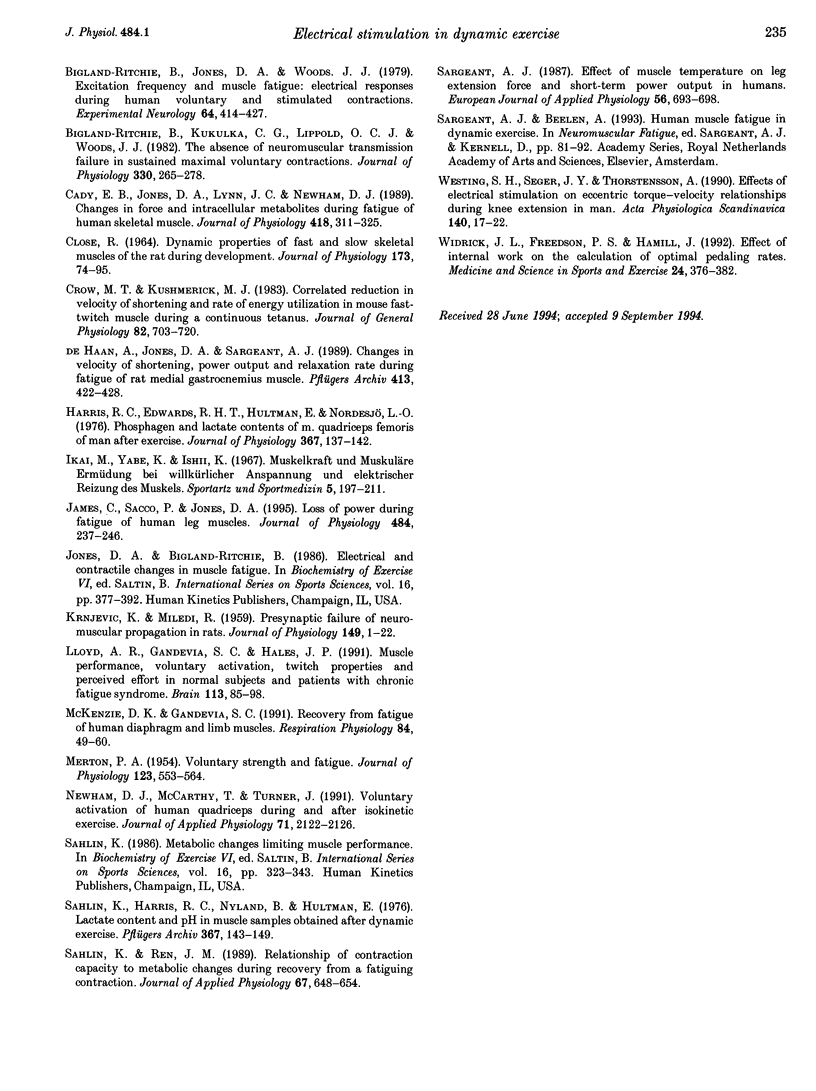
Images in this article
Selected References
These references are in PubMed. This may not be the complete list of references from this article.
- Beelen A., Sargeant A. J. Effect of fatigue on maximal power output at different contraction velocities in humans. J Appl Physiol (1985) 1991 Dec;71(6):2332–2337. doi: 10.1152/jappl.1991.71.6.2332. [DOI] [PubMed] [Google Scholar]
- Beelen A., Sargeant A. J., Wijkhuizen F. Measurement of directional force and power during human submaximal and maximal isokinetic exercise. Eur J Appl Physiol Occup Physiol. 1994;68(2):177–181. doi: 10.1007/BF00244032. [DOI] [PubMed] [Google Scholar]
- Belanger A. Y., McComas A. J. Extent of motor unit activation during effort. J Appl Physiol Respir Environ Exerc Physiol. 1981 Nov;51(5):1131–1135. doi: 10.1152/jappl.1981.51.5.1131. [DOI] [PubMed] [Google Scholar]
- Bigland-Ritchie B. EMG/force relations and fatigue of human voluntary contractions. Exerc Sport Sci Rev. 1981;9:75–117. [PubMed] [Google Scholar]
- Bigland-Ritchie B., Jones D. A., Woods J. J. Excitation frequency and muscle fatigue: electrical responses during human voluntary and stimulated contractions. Exp Neurol. 1979 May;64(2):414–427. doi: 10.1016/0014-4886(79)90280-2. [DOI] [PubMed] [Google Scholar]
- Bigland-Ritchie B., Kukulka C. G., Lippold O. C., Woods J. J. The absence of neuromuscular transmission failure in sustained maximal voluntary contractions. J Physiol. 1982 Sep;330:265–278. doi: 10.1113/jphysiol.1982.sp014340. [DOI] [PMC free article] [PubMed] [Google Scholar]
- CLOSE R. DYNAMIC PROPERTIES OF FAST AND SLOW SKELETAL MUSCLES OF THE RAT DURING DEVELOPMENT. J Physiol. 1964 Sep;173:74–95. doi: 10.1113/jphysiol.1964.sp007444. [DOI] [PMC free article] [PubMed] [Google Scholar]
- Cady E. B., Jones D. A., Lynn J., Newham D. J. Changes in force and intracellular metabolites during fatigue of human skeletal muscle. J Physiol. 1989 Nov;418:311–325. doi: 10.1113/jphysiol.1989.sp017842. [DOI] [PMC free article] [PubMed] [Google Scholar]
- Crow M. T., Kushmerick M. J. Correlated reduction of velocity of shortening and the rate of energy utilization in mouse fast-twitch muscle during a continuous tetanus. J Gen Physiol. 1983 Nov;82(5):703–720. doi: 10.1085/jgp.82.5.703. [DOI] [PMC free article] [PubMed] [Google Scholar]
- Harris R. C., Edwards R. H., Hultman E., Nordesjö L. O., Nylind B., Sahlin K. The time course of phosphorylcreatine resynthesis during recovery of the quadriceps muscle in man. Pflugers Arch. 1976 Dec 28;367(2):137–142. doi: 10.1007/BF00585149. [DOI] [PubMed] [Google Scholar]
- James C., Sacco P., Jones D. A. Loss of power during fatigue of human leg muscles. J Physiol. 1995 Apr 1;484(Pt 1):237–246. doi: 10.1113/jphysiol.1995.sp020661. [DOI] [PMC free article] [PubMed] [Google Scholar]
- KRNJEVIC K., MILEDI R. Presynaptic failure of neuromuscular propagation in rats. J Physiol. 1959 Dec;149:1–22. doi: 10.1113/jphysiol.1959.sp006321. [DOI] [PMC free article] [PubMed] [Google Scholar]
- Lloyd A. R., Gandevia S. C., Hales J. P. Muscle performance, voluntary activation, twitch properties and perceived effort in normal subjects and patients with the chronic fatigue syndrome. Brain. 1991 Feb;114(Pt 1A):85–98. [PubMed] [Google Scholar]
- MERTON P. A. Voluntary strength and fatigue. J Physiol. 1954 Mar 29;123(3):553–564. doi: 10.1113/jphysiol.1954.sp005070. [DOI] [PMC free article] [PubMed] [Google Scholar]
- McKenzie D. K., Gandevia S. C. Recovery from fatigue of human diaphragm and limb muscles. Respir Physiol. 1991 Apr;84(1):49–60. doi: 10.1016/0034-5687(91)90018-e. [DOI] [PubMed] [Google Scholar]
- Newham D. J., McCarthy T., Turner J. Voluntary activation of human quadriceps during and after isokinetic exercise. J Appl Physiol (1985) 1991 Dec;71(6):2122–2126. doi: 10.1152/jappl.1991.71.6.2122. [DOI] [PubMed] [Google Scholar]
- Sahlin K., Harris R. C., Nylind B., Hultman E. Lactate content and pH in muscle obtained after dynamic exercise. Pflugers Arch. 1976 Dec 28;367(2):143–149. doi: 10.1007/BF00585150. [DOI] [PubMed] [Google Scholar]
- Sahlin K., Ren J. M. Relationship of contraction capacity to metabolic changes during recovery from a fatiguing contraction. J Appl Physiol (1985) 1989 Aug;67(2):648–654. doi: 10.1152/jappl.1989.67.2.648. [DOI] [PubMed] [Google Scholar]
- Sargeant A. J. Effect of muscle temperature on leg extension force and short-term power output in humans. Eur J Appl Physiol Occup Physiol. 1987;56(6):693–698. doi: 10.1007/BF00424812. [DOI] [PubMed] [Google Scholar]
- Westing S. H., Seger J. Y., Thorstensson A. Effects of electrical stimulation on eccentric and concentric torque-velocity relationships during knee extension in man. Acta Physiol Scand. 1990 Sep;140(1):17–22. doi: 10.1111/j.1748-1716.1990.tb08971.x. [DOI] [PubMed] [Google Scholar]
- Widrick J. J., Freedson P. S., Hamill J. Effect of internal work on the calculation of optimal pedaling rates. Med Sci Sports Exerc. 1992 Mar;24(3):376–382. [PubMed] [Google Scholar]
- de Haan A., Jones D. A., Sargeant A. J. Changes in velocity of shortening, power output and relaxation rate during fatigue of rat medial gastrocnemius muscle. Pflugers Arch. 1989 Feb;413(4):422–428. doi: 10.1007/BF00584493. [DOI] [PubMed] [Google Scholar]



